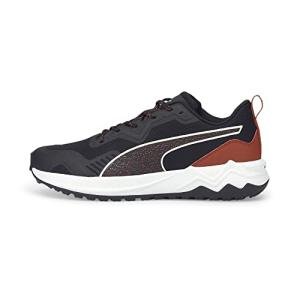Introduction:
Joining a running club can be a big decision for many runners. The appeal often comes from the chance to connect with others who share a similar passion and to find motivation in a group setting.
Running clubs offer valuable support and community, making them worth considering for anyone looking to improve their fitness and find a sense of belonging.

While some may think running is a solitary activity, many find that exercising with others can enhance their experience.
From casual meetups to more competitive environments, running clubs cater to all levels and interests. These groups not only help with personal goals but also create friendships that can last beyond the running trails.
For anyone unsure about joining a running club, it’s helpful to weigh the benefits against the potential challenges.
With various options available, runners can find a club that aligns with their needs, whether that's for social interaction or serious training.
Key Takeaways
- Running clubs provide support and motivation for individual runners.
- Many types of running clubs suit different skill levels and interests.
- Being part of a running community enhances the overall experience of training and racing.
The Rise of Running Clubs
Running clubs have grown in popularity, fueled by social connections and a strong community spirit. Their emergence can be traced through history, with recent events accelerating their growth and appeal.
Historical Context
Running clubs have existed for many years, often formed around competitive running. They provided athletes with training partners and camaraderie. However, their role has changed.
In the past decade, more casual runners sought community and support. This shift saw clubs welcoming people of all skill levels. Local running groups arose, focusing on fun and fitness. Participants often share experiences, challenges, and achievements.
The increase in social media helped spread the word about these clubs. Interested individuals can now easily find local groups that match their goals and interests.
Impact of the Pandemic
The COVID-19 pandemic changed how people approached fitness and community. As gyms closed, many turned to outdoor exercise. Running became a popular choice due to its simplicity and safety.
During the pandemic, new running clubs began to form. Many people sought social connections while following health guidelines. The need for community support intensified as isolation became common.
Virtual meets, challenges, and social media engagement kept members connected. According to Running USA’s report in 2023, around 7% of runners were part of organized clubs to cope with these changes.
This surge in interest highlighted the importance of community. It created a welcoming environment for all runners, enabling friendships and support networks to flourish.
Benefits of Joining a Running Club
Joining a running club can provide several advantages for new and experienced runners alike. These benefits include improved social connections, access to valuable training resources, and enhanced motivation to keep up with running goals.
Community and Social Connections
Running clubs create a sense of community among members. They offer a space for like-minded individuals to connect through shared interests. This environment fosters friendships that extend beyond running.
Members often support one another during training and events. The club atmosphere encourages a sense of belonging, which can be especially valuable for those who may feel isolated.
Meeting regularly for group runs or club events helps build these relationships. Social activities, like post-run gatherings, further strengthen these bonds, enriching the running experience.
Access to Training Resources
Many running clubs provide access to training plans and resources tailored to various skill levels. This includes structured workouts, clinics, and expert advice from experienced runners.
Members can often participate in organized runs that focus on specific training goals, such as preparing for races. This structure offers guidance, ensuring runners remain on track and improve their performance.
Some clubs also collaborate with local coaches who can provide personalized feedback. This access to knowledge can help runners avoid common pitfalls and enhance their skills effectively.
Motivation and Accountability
Motivation is a key benefit of joining a running club. Regular meetings and group runs help members stay committed to their training. Knowing that others depend on their attendance can drive individuals to show up consistently.
Friendly competition within the group can also push members to improve. Tracking progress together encourages healthy habits and supports personal goals.
Furthermore, celebrating achievements as a group cultivates a positive atmosphere. This shared motivation often leads to increased self-confidence and a dedication to running that might be hard to achieve alone.
Training with a Group

Training with a group offers structured workouts and rich opportunities for shared knowledge. This can enhance fitness levels through motivation and shared experiences.
Structured Workouts
Group training sessions typically feature organized workout plans. These plans often include a mix of endurance runs, speed work, and strength training exercises. This variety helps participants develop different aspects of their fitness.
Runners can benefit from a set schedule, which encourages consistency. When workouts are planned, participants are less likely to skip sessions. The group dynamic fosters accountability; if one person misses a run, the rest often feel the impact.
Additionally, group leaders often have insights into proper nutrition and recovery techniques, which can improve performance. The support of peers can make tough workouts more enjoyable and achievable.
Diverse Running Knowledge
Joining a running club exposes individuals to a range of experiences and tips. Each member brings unique knowledge about training techniques, race preparation, and recovery strategies. This sharing of information can enhance personal growth in running.
Participants can learn about different training methods, such as interval training or tempo runs. They may also discover new routes and challenges suited for varying fitness levels. The mix of abilities among members allows for shared learning and support during training sessions.
Moreover, group discussions often include advice on nutrition and hydration. Understanding the importance of fueling the body properly can lead to better performance and recovery. Engaging with others can inspire runners to widen their knowledge and improve their overall approach to training.
Types of Running Clubs

Running clubs come in various forms, catering to different interests and skill levels. Each club type provides unique benefits and opportunities for training and socializing.
Road Runners and Trail Enthusiasts
Road runners focus on running on paved surfaces and generally participate in road races such as marathons and half-marathons. They often follow structured training plans. Clubs like the Road Runners Club of America help members prepare for these events by offering group runs and organized races.
Trail enthusiasts, on the other hand, enjoy running on unpaved paths through natural settings. These clubs emphasize endurance and often explore scenic trails. They provide a great way for runners to connect with nature and improve their trail running skills.
Both types of clubs host events to build community and encourage participation among new and experienced runners.
Clubs Affiliated with Nonprofits
Many running clubs are associated with nonprofits, aiming to raise awareness and funds for various causes. These clubs often organize charity runs. Members not only improve their fitness but also support meaningful initiatives.
For example, clubs like the CALM Running Collective focus on mental health awareness. They create a supportive environment for those affected by suicide. In addition to fundraising, these clubs promote social connections and mental well-being among members.
These affiliations attract participants interested in giving back while pursuing their passion for running.
Preparing for Race Day

Taking the time to prepare for race day is crucial for any runner, whether they are experienced or new to the scene. Proper training and coordination can improve performance and make the day more enjoyable.
Pre-Race Training
Training leading up to race day can significantly impact performance. Runners should focus on tapering their workouts in the week before a 5k. This means reducing mileage while keeping intensity, which helps the body recover.
Incorporating long runs during training is important. These should be run at a comfortable pace, allowing the body to adjust to longer distances.
Cross-training is also beneficial, providing a break from running while building strength and endurance.
For those in running clubs, training together can enhance motivation. Group runs create accountability and offer support. It's common for experienced members to assist beginners, ensuring everyone is ready for race day.
Logistics and Coordination
Preparing logistics can lessen race day stress. Runners should know the race location, start time, and any entry requirements.
Arriving early allows for a warm-up and eliminates last-minute rush.
Planning gear is essential.
Runners should lay out their outfits, hydration, and energy snacks the night before.
Staying organized helps avoid forgetting important items.
Carpooling with running club members can simplify transportation. It’s a great way to share the experience and calm nerves before the race.
Runners should also coordinate pre-race meet-ups to encourage each other and enjoy the shared excitement of race day.
Exploring Local Running Clubs

Local running clubs offer opportunities to meet new people and discover enjoyable running experiences.
These clubs can be found through local running stores or community events. Finding the right club can provide motivation and support on one’s running journey.
Connecting with Local Running Stores
Local running stores often serve as hubs for running clubs.
Many stores host group runs and events, allowing runners to connect with others who share similar interests.
In Denver, runners can find clubs that organize regular meet-ups through stores like Runner’s Roost or Fleet Feet.
These clubs create a sense of community by offering a welcoming environment. Participants can benefit from tips on gear, nutrition, and training.
Often, local running stores may provide discounts on equipment for club members, enhancing the overall experience and making it more affordable.
Finding the Right Fit for You
Choosing the right running club is important for a positive experience.
Each club may offer different focuses, such as social runs, training for races, or charity events.
Interested individuals should consider their goals and preferences when selecting a club.
To find a good match, visit local meet-ups to get a feel for the atmosphere.
Engaging with club members can help determine if it’s the right fit.
Some clubs may emphasize fun running with social events, while others focus on improving performance.
It's essential to assess which environment aligns best with personal running objectives.
Challenges and Considerations

Running clubs offer many benefits, but they also have challenges and considerations that potential members should keep in mind. These include issues with inclusivity and accessibility that can affect overall participation and enjoyment.
Maintaining Inclusivity
Inclusivity is crucial for a successful running club.
Many clubs claim to welcome all paces, but some may not truly support slower runners or those new to the sport.
If the pace for group runs is set too fast, it can alienate individuals who need a more accommodating environment.
Clubs should provide options for different skill levels.
Encouraging slower runners to join is essential for creating a welcoming atmosphere that fosters camaraderie.
It's important to have leaders who understand diverse running backgrounds and can promote a genuine sense of community. This ensures that everyone, regardless of ability, feels valued and included in the group.
Accessibility Concerns
Accessibility challenges can impact who can join a running club.
Locations must be easy to reach for all members. If a club meets in a place that is hard to access by public transportation, it limits participation.
Another concern is related to physical abilities. Some running clubs may not account for those with disabilities.
Offering adaptive options or modified activities can help reach a wider audience.
Clubs should strive to be accessible, ensuring everyone has the chance to participate without barriers. Recognizing these needs can greatly enhance the club’s appeal and effectiveness.
Frequently Asked Questions
Running clubs offer a variety of benefits for individuals interested in improving their skills and connecting with others. Here are some common questions regarding running clubs.
What are the benefits of joining a running club?
Joining a running club provides a structured training environment.
Members receive tips and advice from more experienced runners, which can enhance their skills.
The social aspect helps individuals stay motivated and accountable.
How does a beginner get started with a running club?
A beginner should first research local running clubs online or ask friends for recommendations.
It is helpful to reach out via email to inquire about the club's atmosphere and the types of runners involved. Most clubs welcome new members regardless of skill level.
Can participating in running clubs improve your performance?
Yes, running clubs can lead to performance improvements.
Regular training with others can help members increase their pace and endurance.
Access to coaching and tips from faster runners can also help individuals set and achieve specific goals.
What social opportunities do running clubs offer?
Running clubs create opportunities for social interaction.
Members often participate in group runs, social events, or gatherings after workouts. This fosters friendships that extend beyond running.
How do running clubs maintain their popularity?
Running clubs maintain popularity by providing a supportive community.
They often organize events, races, and training sessions that appeal to a wide range of runners. Networking and social activities also promote a sense of belonging among members.
Are there running clubs that cater to specific demographics or interests?
Yes, many running clubs cater to different interests and demographics. Some clubs focus on beginners. Meanwhile, others may be performance-oriented.
There are also clubs for specific age groups or those that promote certain types of events. For example, marathons or trail running.







